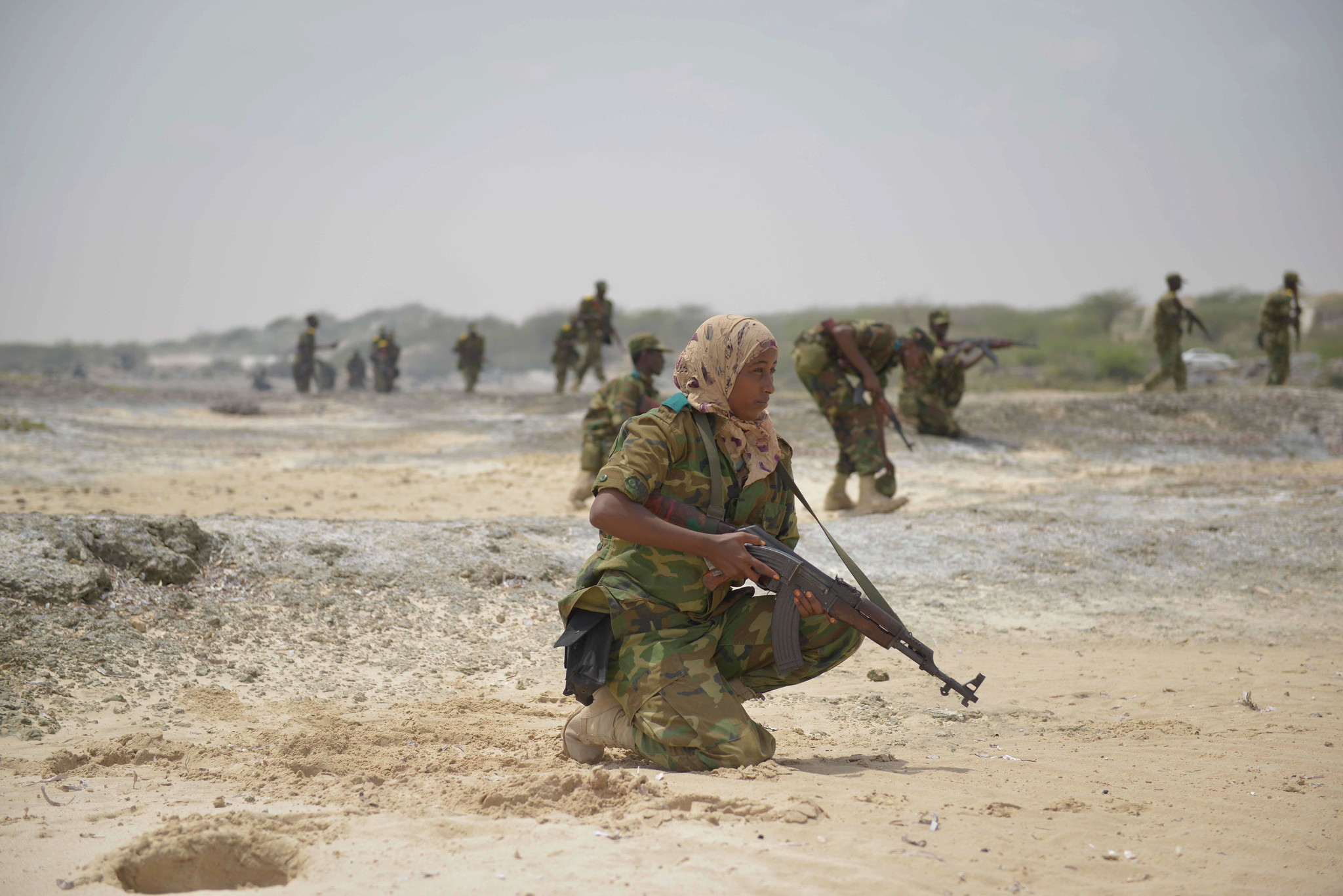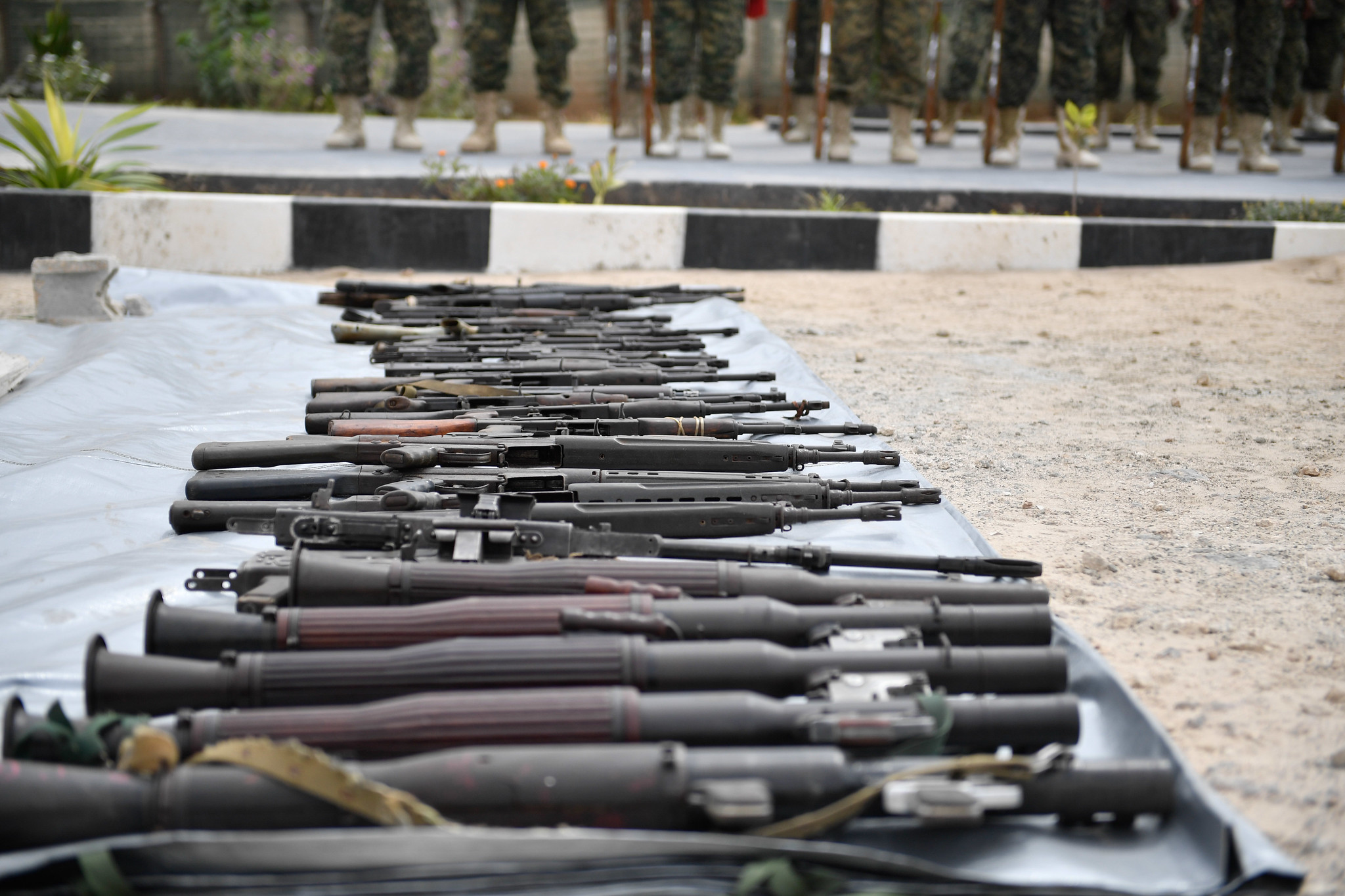
A female soldier belonging to the Somali National Army.
“Security analysts said the brazen attacks were a fresh demonstration of al-Shabab’s goal of destabilizing the government in Mogadishu.”
As the accompanying excerpted article from Somali independent news outlet Shabelle Media Network explains, al Shabaab is involved in two aspects of the country’s dragged out elections. First, it is delaying the voting process by targeting politicians and the means to conduct an election. As the article notes, the election was originally scheduled for July 2021. At that time, 329 seats in parliament were to be filled. Second, it is taking advantage of the confusion caused by the delay to launch additional terrorist attacks, including two bombings in the city of Beledweyne, which claimed at least 48 lives. Among the dead is Amina Mohamed Abdi, a young lawmaker who had been a strong critic of the government. She is the fifth parliamentary candidate killed in two months.
Political disputes between President Mohamed Abdullahi Farmaajo and Prime Minister Mohamed Hussein Roble, as well as disagreements between the central and provincial governments, have had a significant role in knocking the election process off kilter. All of this has played into the hands of al Shabaab, which has found the disarray an opportune time to strike at targets that compound the government’s inability to keep a firm election date. Additionally, al Shabaab’s attacks have created concern among the civilian populace about their safety, likely suppressing the actual number who will go to the polls. On the same day as the Beledweyne bombings, two al Shabaab militants breached Mogadishu’s heavily fortified airport, which was the designated location for the presidential elections. It is also the location of the UN, AMISOM, and several Western embassies. Western powers have been pushing Somalia to conduct elections, hoping they might help unify the divided nation and strengthen its ability to combat al Shabaab. Al Shabaab’s recent attacks are a strong reminder that despite repeated pronouncements of the terrorist organization being weakened, it is still a potent force capable of frustrating both the Somali government and Western powers.
Source:
“Al-Shabaab Increases Attacks as Elections Drag in Somalia,” Shabelle Media Network (independent news outlet), 26 March 2022. https://shabellemedia.com/al-shabaab-increases-attacks-as-elections-drag-in-somalia/
Security analysts said the brazen attacks were a fresh demonstration of al-Shabab’s goal of destabilizing the government in Mogadishu.
Among the dead was a firebrand woman member of parliament, Amina Mohamed, who was on the campaign trail when she was targeted and killed by a suicide bomber.
“If the election is being delayed then they must have got time, so that at least they can easily target the elders, who select the candidates,” Abdisamad said. “They can easily kill candidates vying for the seats. They can easily interrupt the entire election process, so that they see failed outcome at the end of the day.”
Safiina said security has been tightened at all polling stations and is provided by national police as well as the African Union Mission in Somalia (AMISOM). Safiina said anyone who wants to undermine the election by acts of terrorism or disruption will fail.
Image Information:
Image: A female soldier belonging to the Somali National Army.
Source: AMISOM/Flickr, https://flickr.com/photos/61765479@N08/27519432255
Attribution: Public Domain

